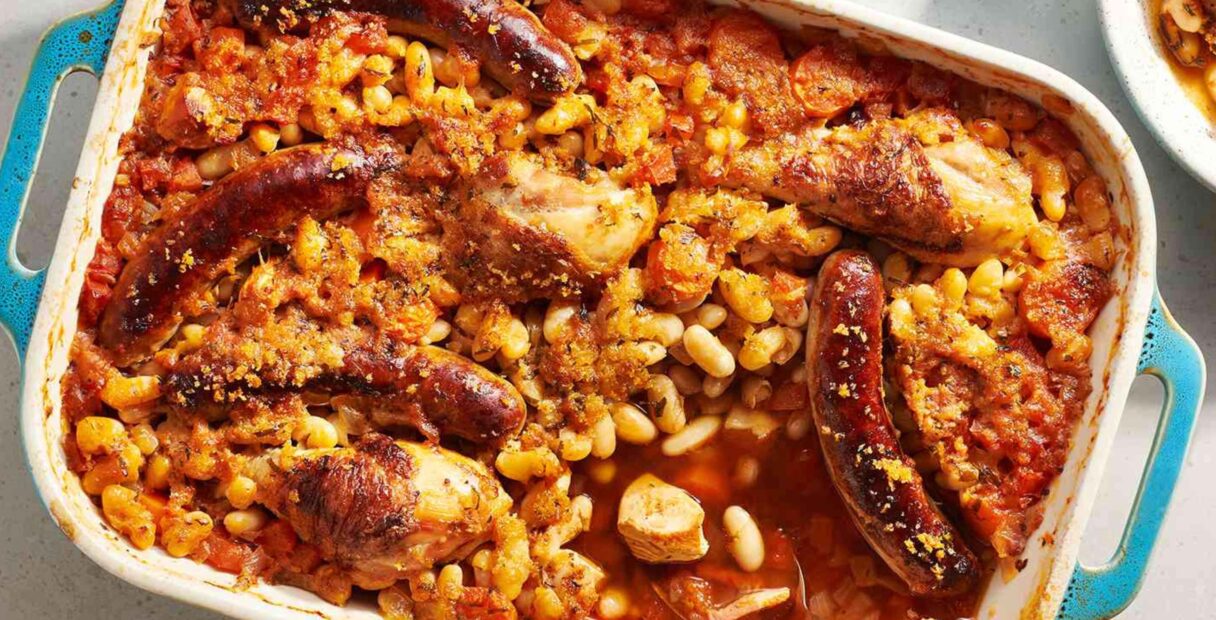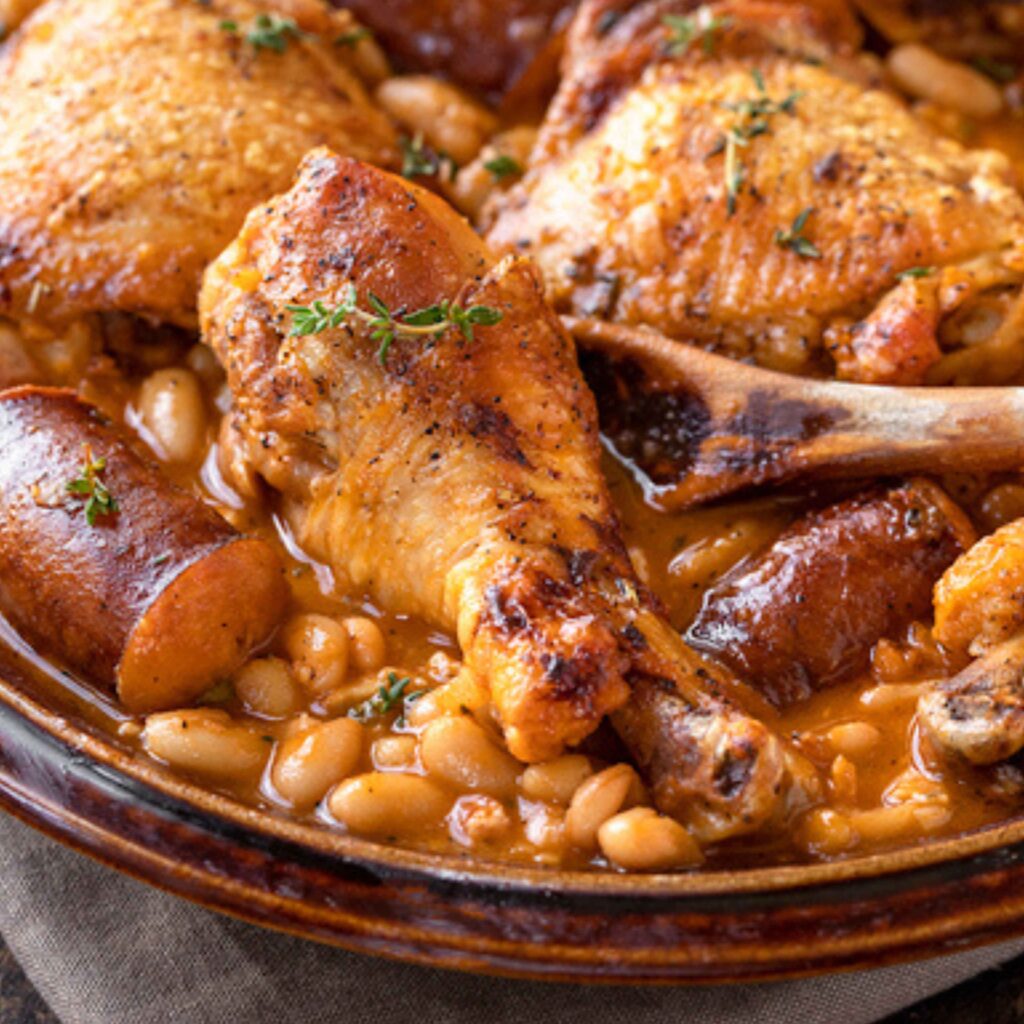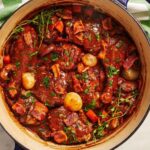
Rustic Cassoulet


The Heritage of Rustic Cassoulet
Introduction
Rustic Cassoulet, a hearty and flavorsome dish from the South of France, boasts a captivating history that reflects the culinary traditions of the region. In this article, we embark on a journey to unveil the intriguing origins and historical significance of Rustic Cassoulet, a beloved culinary creation that embodies the rustic charm and gastronomic legacy of French cuisine.
The Origins of Rustic Cassoulet
A Dish Rooted in History
The history of Rustic Cassoulet can be traced back to the Languedoc region of Southern France, where hearty, slow-cooked dishes were a way of life. This humble dish was born out of necessity, where peasants and villagers sought to make the most of their ingredients, particularly beans, and meats.
A Culinary Tapestry
Rustic Cassoulet’s name is derived from the earthenware dish it was traditionally cooked in, called a “cassole.” It evolved as a hearty one-pot meal that combined locally available ingredients, such as white beans, various meats, and aromatic herbs.
The Culinary Evolution
Rise to Prominence
Over time, Rustic Cassoulet transcended its humble origins and gained popularity throughout France. It became emblematic of the countryside, a symbol of warmth and comfort amidst the rugged landscapes of the South.
A Dish of Regional Variations
While the core ingredients of Rustic Cassoulet remained consistent, variations of the dish emerged across different regions of Southern France. Each locality added its own unique touch, resulting in a tapestry of flavors and interpretations.
Cultural Significance
A Taste of Southern France
Rustic Cassoulet stands as a quintessential taste of Southern France. Its association with the Languedoc region and its reliance on local ingredients celebrate the essence of regional French cuisine.
A Symbol of Conviviality
Traditionally, Rustic Cassoulet was prepared for gatherings and communal celebrations. Its robust flavors and communal cooking process made it a dish that brought people together, emphasizing the importance of shared meals in French culture.
Conclusion
In conclusion, the history of Rustic Cassoulet is a testament to the enduring appeal of simplicity and tradition in French cooking. From its origins as a practical peasant dish to its status as a cherished regional specialty, Rustic Cassoulet continues to captivate with its rich history and cultural significance. Its journey from humble beginnings to a beloved French classic is a testament to the timeless allure of this rustic delight.
For more information on Rustic Cassoulet, its preparation, and regional variations, one can explore dedicated culinary resources and studies of French gastronomy.
- Serves: 6 People
- Prep Time: 30 minutes (plus soaking time)
- Cooking: 2.5 hours
- Difficulties: medium
Ingredients
For Cooking
- 1lb dried white beans (navy or cannellini), soaked overnight
- 8 oz pork shoulder, cubed
- 8oz boneless lamb cubed
- 8 oz pork sausages sliced
- 4 slices bacon, chopped
- 1 onion diced
- 2 carrots, peeled and diced
- 2 cloves garlic minced
- 14oz can crushed tomatoes
- 4cups chicken broth
- 1bouquet garni (bundle of thyme rosemary, and bay leaf)
- Salt and pepper to taste
- 1 cup breadcrumbs
- Chopped fresh parsley for garnish
For Dressing
Nutritional Information
-
Calories:
480 -
Total Fat
20g -
Saturated Fat:
7g -
Cholesterol:
70mg -
Sodium:
1100mg -
Total Carbohydrates
47g -
Dietary Fiber
10g -
Sugars:
6g -
Protein:
30g
Procedure
Conclusion: Rustic Cassoulet captures the essence of French comfort food with its blend of meats, beans, and aromatic herbs. Whether you choose the classic recipe or opt for a seafood variation, the heartwarming flavors and hearty textures will take you on a culinary journey to the French countryside. Embrace the warmth and nostalgia of Rustic Cassoulet as you savor every spoonful of this timeless dish.
-
Mark As Complete
Drain and rinse the soaked beans. Place them in a large pot and cover with water. Bring to a boil, then reduce the heat and simmer until the beans are tender. Drain and set aside.
-
Mark As Complete
In a large Dutch oven, cook the chopped bacon until crispy. Remove the bacon and set aside, leaving the drippings in the pot.
-
Mark As Complete
Season the pork and lamb with salt and pepper. Brown the meat in the bacon drippings until golden. Remove and set aside.
-
Mark As Complete
In the same pot, sauté the diced onion and carrots until softened.
-
Mark As Complete
Add the minced garlic and cook for another minute.
-
Mark As Complete
Return the cooked meats and bacon to the pot. Pour in the crushed tomatoes and chicken broth.
-
Mark As Complete
Add the bouquet garni and bring the mixture to a simmer.
-
Mark As Complete
Cover the pot and let the cassoulet simmer for about 1.5 to 2 hours, until the flavors meld.
-
Mark As Complete
Stir in the cooked white beans and sliced sausages. Simmer for an additional 15 minutes.
-
Mark As Complete
Preheat the oven to 375°F (190°C). Transfer the cassoulet to a baking dish and sprinkle breadcrumbs over the top.
-
Mark As Complete
Bake in the preheated oven for about 20 minutes, until the breadcrumbs are golden and crispy.
-
Mark As Complete
Garnish with chopped parsley before serving.
Dawood Ali Mian
Chef Dawood brings a wealth of experience and a diverse culinary background to our kitchen. His culinary training spans the globe, from classic French techniques to contemporary fusion cuisine. Drawing inspiration from both traditional and modern culinary traditions, Chef Dawood’s creations are a harmonious blend of flavors and textures that tantalize the palate.
You also might like
No recipe were found.



